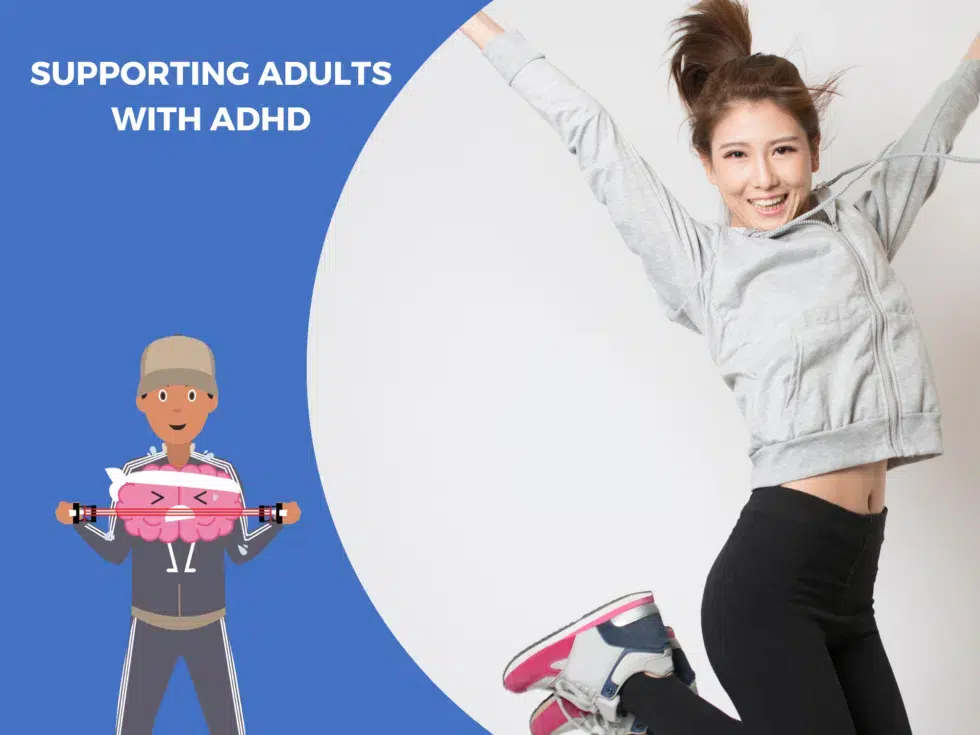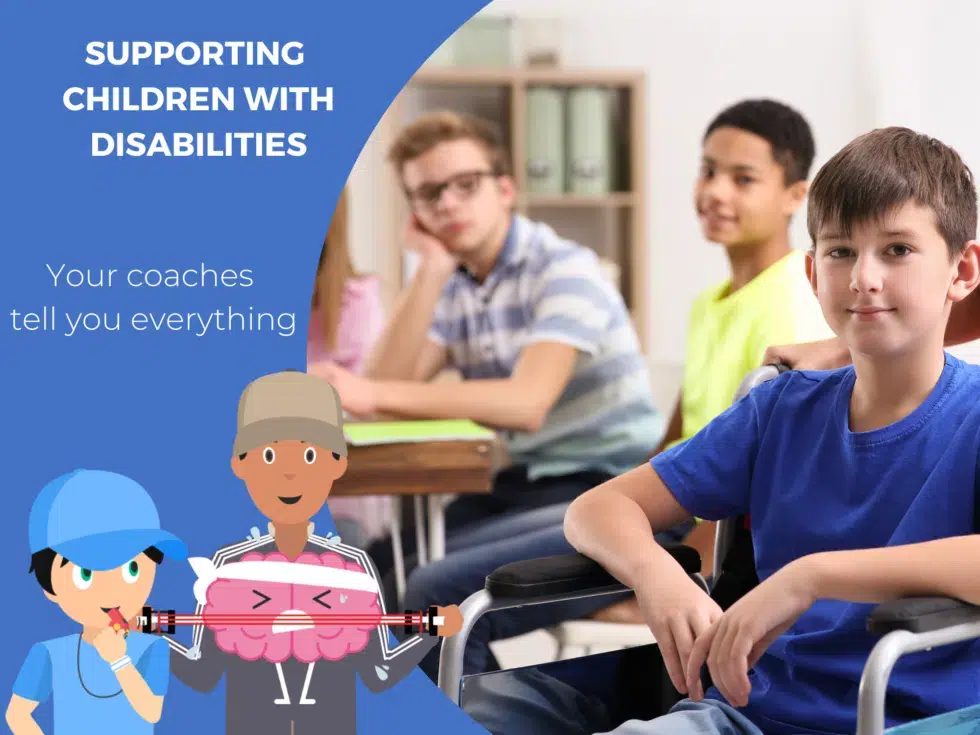Attention deficit hyperactivity disorder (ADHD) is a common mental health problem in children, characterized by symptoms such as hyperactivity, impulsivity and inattention. Early and accurate diagnosis of ADHD is essential to ensure adequate support for these children. In this context, teachers play a crucial role in the process of testing children for ADHD. Their careful observation of classroom behavior, their communication with parents, and their collaboration with health professionals are all essential factors for accurate diagnosis and effective support. In this article, we explore the key role of teachers in the early identification of ADHD, highlighting the importance of their contribution to the well-being of the children concerned.
Diagnosis of ADHD
Diagnosing Attention Deficit Hyperactivity Disorder (ADHD) is a crucial step in helping children with the condition. It is based on the identification of characteristic symptoms and the assessment of behavioral, cognitive and emotional disorders. To diagnose ADHD, several criteria need to be taken into account, and this is where the role of teachers comes into play.
The diagnostic criteria for ADHD generally include a series of symptoms, such as the inability to sit still, impulsivity, difficulty concentrating, etc. Teachers are often the first to notice these behaviors in students, as they spend many hours with them in the classroom. Their careful observation of children’s behavior can provide valuable clues for diagnosis.
However, it is essential to note that diagnosing ADHD is not an easy task. ADHD symptoms can be confused with other behavioral or learning problems, making the diagnostic process complex. Therefore, a multidisciplinary assessment involving mental health professionals, psychologists and psychiatrists is recommended to establish an accurate diagnosis.
Diagnosis of ADHD
Diagnosing Attention Deficit Hyperactivity Disorder (ADHD) is a crucial step in helping children with the condition. It is based on the identification of characteristic symptoms and the assessment of behavioral, cognitive and emotional disorders.
ADHD diagnostic criteria
The diagnosis of Attention Deficit Hyperactivity Disorder (ADHD) is based on specific criteria. These criteria usually include a series of symptoms such as inability to sit still, impulsivity, difficulty concentrating, and other characteristic behaviors. Teachers have an essential role to play in observing and recognizing these symptoms in students, as they spend many hours in the classroom with them.
Diagnostic difficulties in children
The diagnosis of ADHD can be particularly complex in children, due to a number of factors. ADHD symptoms can sometimes be confused with other behavioral or learning problems, making the diagnostic process tricky. It’s important to take individual differences into account, and to use a thorough assessment to avoid misdiagnosis.
The importance of a multidisciplinary assessment
To establish an accurate diagnosis of ADHD, a multidisciplinary assessment is often recommended. This involves collaboration between different mental health professionals, psychologists and psychiatrists. A thorough evaluation can help rule out other possible causes of symptoms and confirm the presence of ADHD.
The role of teachers in preliminary identification
Observation and monitoring of classroom behavior
Teachers spend most of their day in the classroom with students, allowing them to closely observe behavior and interactions. They are well placed to notice the potential signs of ADHD, such as restlessness, impulsivity, or the inability to stay focused on a task. Careful observation by teachers is often the first step towards recognizing the symptoms of ADHD in a child.
Communication with parents
Communication between teachers and parents is a key element in the early identification of ADHD. Teachers can share their observations and concerns with parents, which can encourage further discussion and steps towards diagnosis. Parents, in turn, can provide valuable information on their child’s behavior outside school, contributing to the overall assessment.
Collaboration with healthcare professionals
Collaboration between teachers and health professionals is essential for the effective identification of ADHD. Once symptoms are observed in the classroom, teachers may recommend that parents consult a mental health professional, such as a psychologist or psychiatrist. This collaboration enables us to start the diagnostic process in the right way.
The importance of communication between teachers and healthcare professionals
Information exchange for accurate diagnosis
Fluid communication between teachers and healthcare professionals is crucial to obtaining an accurate diagnosis of ADHD. Teachers can provide information on symptoms observed in class, specific behaviors, and difficulties encountered by the student. This information complements the healthcare professional’s assessment, helping to confirm or refute the diagnosis.
Implementation of an educational intervention plan
Once ADHD has been diagnosed, teachers and health professionals work together to implement an educational intervention plan. This plan aims to adapt teaching and the classroom environment to meet the specific needs of students with ADHD. Teachers play a central role in implementing these intervention measures.
Ongoing support for students with ADHD
Communication between teachers and healthcare professionals is also important to ensure ongoing support for students with ADHD. It makes it possible to monitor the evolution of symptoms, adjust teaching strategies and share feedback to maximize student progress. This collaboration fosters an adapted educational environment, conducive to the development of children with ADHD.
Challenges and strategies for teachers
Class management
Classroom management for teachers can be a major challenge when students with ADHD are present. Symptoms such as impulsivity and hyperactivity can disrupt the normal flow of lessons. Teachers need to develop specific classroom management strategies to maintain an effective learning environment while meeting the needs of students with ADHD.
Pedagogical adaptations
Adapting teaching methods is essential to support students with ADHD. Teachers can implement strategies such as frequent breaks, clear and concise instructions, or interactive activities to help these students stay engaged in learning. It’s important to individualize teaching to meet the specific needs of each student.
Emotional and social support
Students with ADHD may also need emotional and social support. Teachers play a key role in fostering an inclusive and caring classroom environment. They can foster positive interactions between students, help develop social skills, and offer emotional support when needed.
Last school year, I had an experience that had a profound impact on my teaching career. Two of my pupils in CM1, Thomas and Sophie, have been diagnosed with Attention Deficit Hyperactivity Disorder (ADHD). At the beginning of the year, we still didn’t know the reason for their atypical behavior, and this posed a number of challenges.
Thomas was a smart boy, but he just couldn’t stay still. He was constantly agitated, got up from his desk all the time, and never seemed to be able to concentrate on a task for more than a few minutes. His classmates were often disturbed by his restlessness, and he found it hard to follow lessons.
Sophie, on the other hand, was very talkative and impulsive. She frequently interrupted class discussions and had trouble waiting her turn to speak. She often seemed distracted and had trouble finishing her homework on time. Despite her academic skills, she always seemed out of step with the rest of the class.
At first, we teachers tried to apply conventional methods of discipline to manage these behaviors. We thought Thomas and Sophie were simply unruly students. As the months passed, however, it became clear that something deeper was behind their actions.
It was thanks to open discussions with parents and their willingness to look for answers that we began to consider ADHD. The diagnoses were made after in-depth assessments by health professionals. It was a relief for the children and their families, but it also opened a new chapter of challenges for our class.
The transition to teaching strategies adapted to Thomas and Sophie’s needs was demanding. We had to develop individualized educational intervention plans for each child, using specific classroom management techniques. It took a lot of patience, understanding and constant communication between parents, health professionals and ourselves, the teachers.
Over time, we’ve seen enormous progress. Thomas and Sophie have learned to better manage their symptoms and adapt to the classroom environment. Their classmates have also learned to be more understanding and supportive. We’ve found that the key to success lies in acceptance, flexibility and collaboration.
Strategies to Support Students with ADHD in the Classroom
ADHD can affect a student’s ability to concentrate, sit quietly and complete tasks. However, with the right strategies, teachers can create a learning environment that helps ADHD students thrive.
Setting up the Classroom Environment
- Minimal Work Zone: Create a streamlined workspace with few visual and auditory distractions for ADHD students. This can help improve their concentration.
- Strategic seating: Place ADHD students close to the teacher and away from potential distractions such as windows, doors or high-traffic areas.
Adapting teaching methods
- Clear, concise instructions: Give step-by-step instructions and make sure they are clearly understood. Repeat if necessary, and consider using visual aids to reinforce verbal instructions.
- Sequence tasks: divide jobs into manageable segments. Use timers or alarms to delimit the time devoted to each task, helping students to stay focused.
- Positive and Immediate Feedback: Positively reinforce desired behaviors as soon as they occur to encourage repetition.
Promoting Active Engagement
- Structured movement: Incorporate active breaks that allow students to move, which can improve their attention when they return to sedentary tasks.
- Interactive learning: Using hands-on activities and educational games to teach concepts. This can help keep ADHD students interested.
Organizational and emotional support
- Organizational Tools: Teach and encourage the use of agendas, checklists, and other organizational tools to help students manage their assignments and materials.
- Managing Emotions: Work on emotional regulation and stress management strategies, such as deep breathing or calm breaks, to help students manage impulsivity and frustration.
Working with parents and professionals
- Regular Communication: Establish open communication with parents to share progress, concerns, and successful strategies at home and at school.
- Multidisciplinary team: Work with school counselors, psychologists and other professionals who support the student to create a coherent support plan.
Continuing Education for Teachers
- Professional development: Participate in training courses on ADHD and inclusive teaching strategies to keep abreast of the latest research and effective teaching methods.
By implementing these strategies, teachers can make a significant contribution to the academic success of students with ADHD, by fostering a learning environment that meets their unique needs. These practical approaches aim to maximize each student’s potential, emphasizing the importance of adaptability, patience and understanding in inclusive education.
Useful resources for further information



Other articles that might interest you:
Recognizing ADHD in Children: Signs to Look For
Attention Deficit Hyperactivity Disorder (ADHD) is a neurodevelopmental disorder that affects a significant number of...
Managing ADHD and Anxiety: Tips for Finding Balance
Attention Deficit Hyperactivity Disorder (ADHD) and anxiety are two distinct yet often overlapping conditions that can...
Managing Combined ADHD: Strategies for Success
Attention Deficit Hyperactivity Disorder (ADHD) is a neurodevelopmental disorder that manifests in various forms, with...






